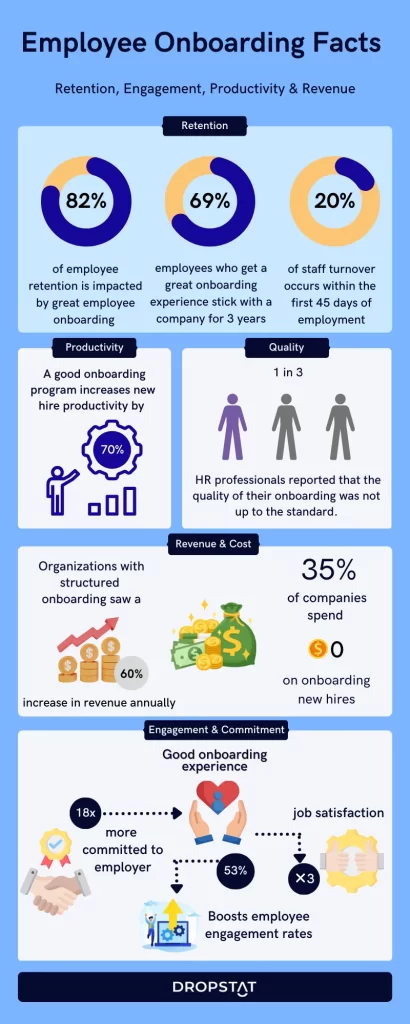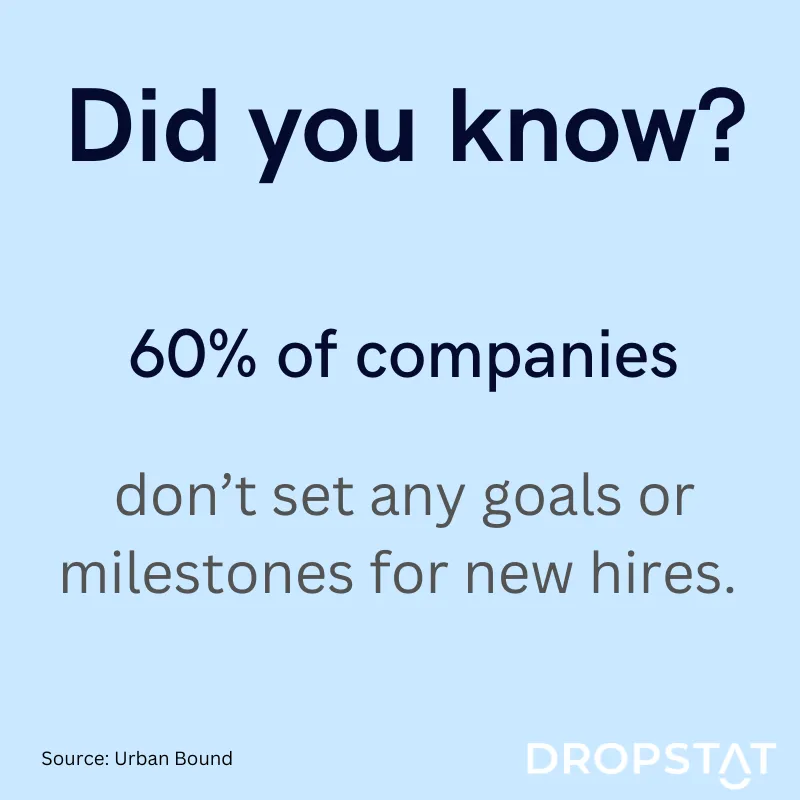Benefits of effective onboarding for new employees
An institution’s onboarding program shapes an employee’s first impression of the company, sets expectations, and highlights institutional values. Effective employee onboarding has numerous benefits, including:
- communicating company policies and values
- the ability to improve nurse retention
- engaging new employees in the facility
- conveying clear roles and responsibilities
- ensuring that individual employees have access to resources that promote efficiency and productivity
Common challenges with onboarding new employees
Although numerous onboarding tasks should be completed through the onboarding process, it is imperative to recognize that new hires are still becoming acclimated to an unfamiliar environment. Therefore, onboarding efforts should avoid common challenges, which include:
- overloading new employees with too much information
- using vague terms that leave new hires confused
- lacking onboarding summary guides after employee orientation, Making it difficult for new hires to remember all the information
- a lack of space for feedback regarding the onboarding experience
8 best practices for onboarding new employees in healthcare
- begin the onboarding process before meeting in person
- utilize software to automate as much of the process as possible
- use orientation and training to cultivate personal experiences and culture instead of verifying paperwork and logistics
- Use an employee onboarding checklist to ensure that the process is informational and specific to the roles of the new hires
- identify ways to collect feedback about the onboarding process
- ensure that onboarding sessions are comprehensive for all employees
- determine what information is crucial for initial onboarding to avoid information overload
- create an accessible recap of the information covered in the onboarding programs

1. Begin the onboarding process before meeting in person
While in-person onboarding sessions are essential to the productivity of each new hire, ensuring that every employee feels welcomed and comfortable within the organization can be started before official onboarding. If employees do not feel comfortable, they will be less likely to reach out with concerns and questions, which weakens partnerships within care teams and can harm patient health outcomes. Additionally, using the pre-onboarding time to explore company culture allows new employees to assess how they connect to the company’s mission and values and to excite new employees about joining a well-organized and focused institution.
2. Use software to automate onboarding processes
Automating onboarding tasks involves sending out mass reminders or new hire paperwork, reducing time spent on simple, repetitive tasks, which allows management to prioritize more complex assignments such as designing processes that can be used to collect feedback regarding the onboarding journey. Human error can also be eliminated by automating onboarding processes which helps to improve efficiency and accuracy.
- Cultivate a sense of company culture
Healthcare facilities can also improve nurse retention rates by focusing on developing and supporting a strong company culture starting during onboarding. When new hires are capable of determining company values that they believe in, performance metrics such as productivity, employee engagement, and motivation to support the company increases. A strong, positive company culture directly benefits patient satisfaction while reducing costs associated with turnover.
4. Create an orientation schedule and an employee onboarding checklist
Creating a structured onboarding process eliminates wasted time while maximizing the amount of information employees can gather about their responsibilities. An onboarding schedule assists team leaders in sticking to the most important information, which allows new hires to thoroughly process their new roles. Additionally, generating employee onboarding checklists guarantees that critical information is not forgotten and that each new hire receives the information required for them to be successful within their respective departments.

- Collect feedback
Proper onboarding should always include a space to collect feedback about the hiring and onboarding process. This practice gives new employees the confidence that they are joining a work environment that values continuous improvement and is conducive to constant communication across all levels of the institution. Gathering and analyzing employee feedback allows the organization to discover discrepancies and issues within the onboarding program to adjust the onboarding process and improve employee satisfaction.
6. Strive for the onboarding process to be comprehensive for all employees
When employees are part of company meetings or onboarding programs that do not provide information useful to them personally, they are more likely to view the company as disorganized. However, by assuring that new employee onboarding contains information that is crucial to all new hires, your healthcare facility can avoid negative employee feedback that contributes to turnover.
- Avoid information overload
Feeling rushed and overwhelmed during the onboarding process leaves new employees feeling stressed and confused before they even begin. By keeping sessions succinct, reviewing information, and leaving extraneous information for emails or the end of the day, your facility will have a more efficient onboarding process that contributes to new employee satisfaction and keeps new hires feeling informed but not overwhelmed.
- Create an onboarding recap
A good onboarding process should include an overview of the information that was covered so that new employees have the opportunity to review the information and feel confident and supported in their knowledge about their new roles before the first day. When new hires feel like they can take their time with thoroughly understanding the information, they likely experience less anxiety about the onboarding and starting their new roles, which improves the employee experience.
How can Dropstat enhance the onboarding of new employees?
Healthcare facilities can improve new employee onboarding and employee experience by using Dropstat’s inter-nurse chat features, which enable nurses to communicate with one another while fostering a sense of community within the work environment. Dropstat’s in-app chat feature also allows colleagues to welcome new hires and cultivate strong work relationships as soon as possible. This also contributes to an increase in retention and employee engagement.
Additionally, the on-platform rewards program and wellness resources provide acknowledgment and appreciation for staff, which supports a culture of gratitude. Ultimately, using Dropstat’s carefully designed platform enables your healthcare facility to put its best foot forward with onboarding which optimizes many other aspects of your organization, such as employee experience, retention, and engagement.







